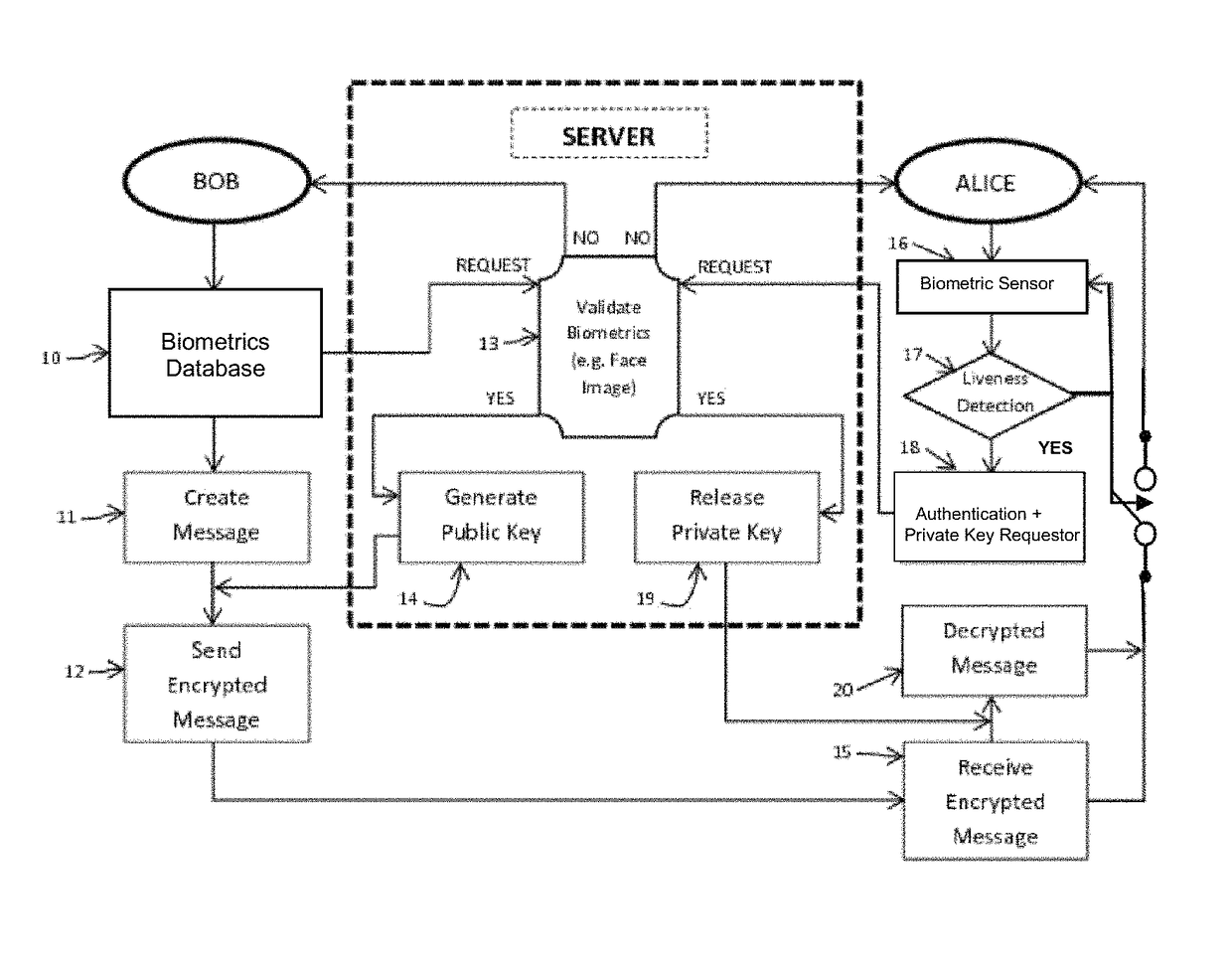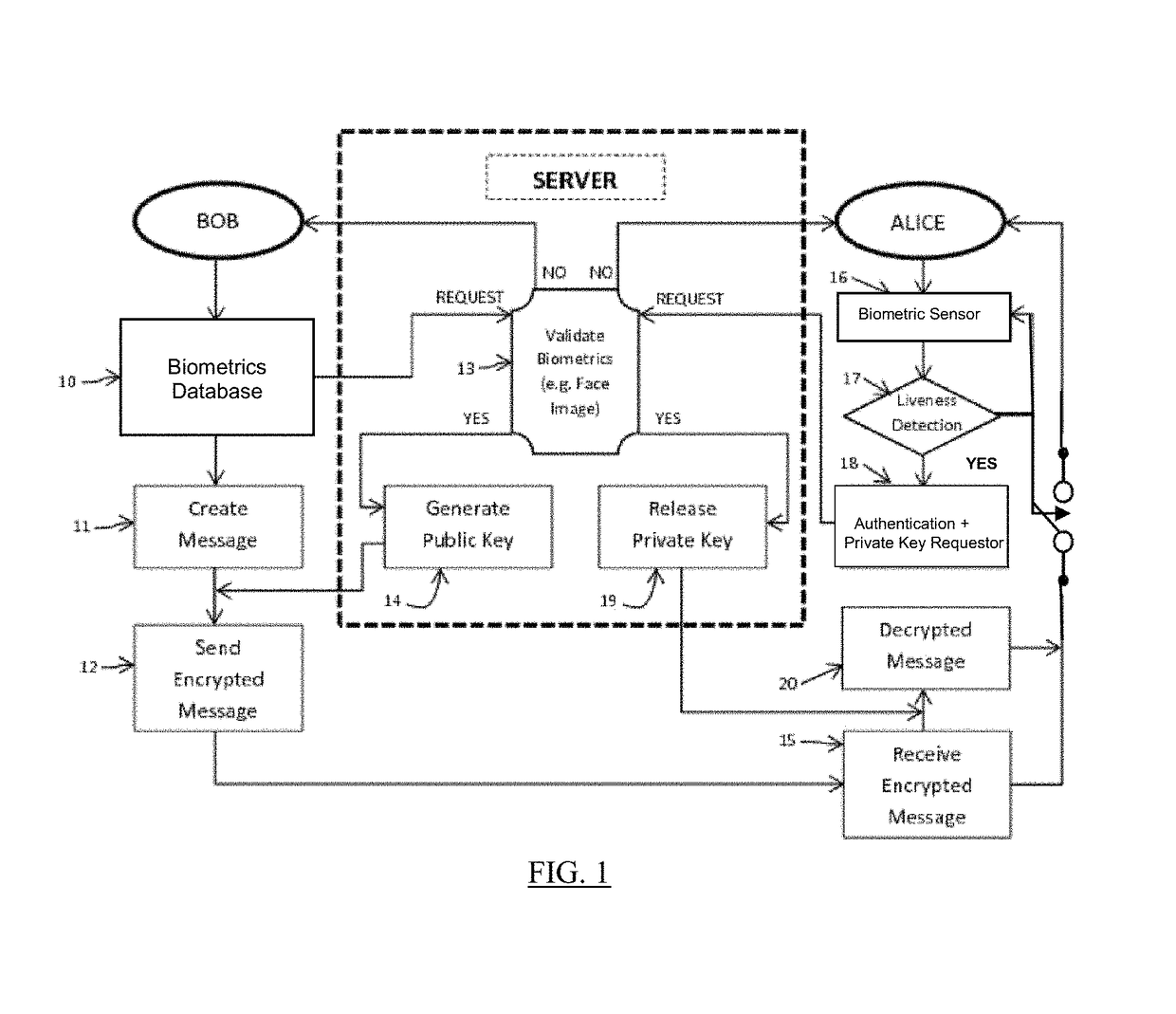Mobile data communication using biometric encryption
a biometric and mobile device technology, applied in the field of mobile device data communication using biometric encryption, to prevent the data access of the mobile device, enhance robustness, and protect user privacy and data security
- Summary
- Abstract
- Description
- Claims
- Application Information
AI Technical Summary
Benefits of technology
Problems solved by technology
Method used
Image
Examples
Embodiment Construction
[0026]The popularity of mobile devices, such as, smartphones and tablets gives rise to many issues that must be addressed for privacy and data security. Some examples are:[0027]1) How to protect the personal and corporate data stored in the mobile devices, such as, emails, contacts, calendar, photos, audio and video files;[0028]2) How to protect personal activities on the mobile device when it is shared with multiple users, ensuring one user cannot access other user's sensitive data and / or unauthorized access;[0029]3) How to protect the mobile device if it is lost or stolen, preventing the potential loss; and[0030]4) How to protect the mobile device from crackers / hackers when used in public Wi-Fi locations.
[0031]Using password for locking and preventing access to mobile devices is well known. However, password can be forgotten and can be cracked by sophisticated hackers. Once the password is cracked, one can easily access all the data in the mobile device. In order to overcome that,...
PUM
 Login to View More
Login to View More Abstract
Description
Claims
Application Information
 Login to View More
Login to View More - R&D
- Intellectual Property
- Life Sciences
- Materials
- Tech Scout
- Unparalleled Data Quality
- Higher Quality Content
- 60% Fewer Hallucinations
Browse by: Latest US Patents, China's latest patents, Technical Efficacy Thesaurus, Application Domain, Technology Topic, Popular Technical Reports.
© 2025 PatSnap. All rights reserved.Legal|Privacy policy|Modern Slavery Act Transparency Statement|Sitemap|About US| Contact US: help@patsnap.com



